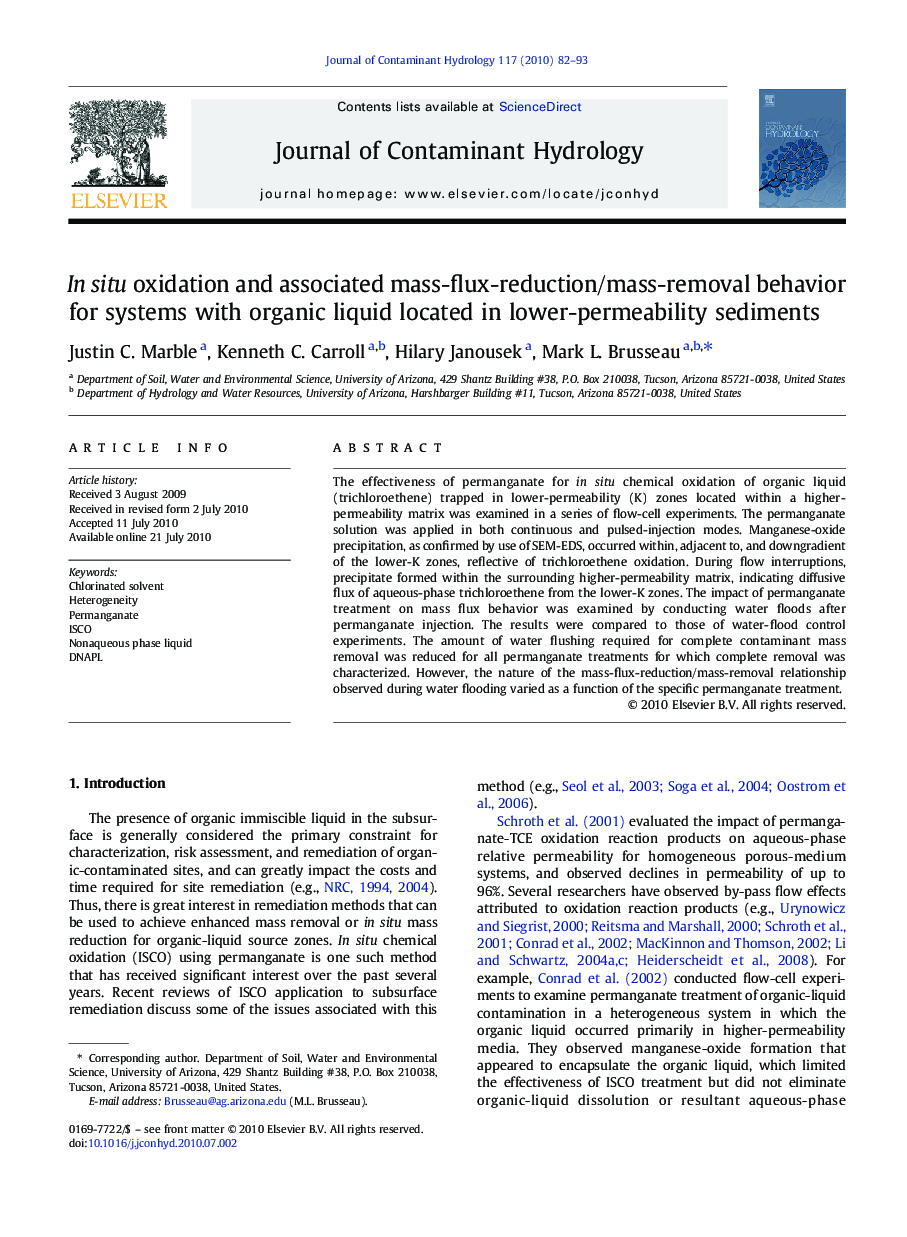| کد مقاله | کد نشریه | سال انتشار | مقاله انگلیسی | نسخه تمام متن |
|---|---|---|---|---|
| 4547080 | 1627085 | 2010 | 12 صفحه PDF | دانلود رایگان |

The effectiveness of permanganate for in situ chemical oxidation of organic liquid (trichloroethene) trapped in lower-permeability (K) zones located within a higher-permeability matrix was examined in a series of flow-cell experiments. The permanganate solution was applied in both continuous and pulsed-injection modes. Manganese-oxide precipitation, as confirmed by use of SEM-EDS, occurred within, adjacent to, and downgradient of the lower-K zones, reflective of trichloroethene oxidation. During flow interruptions, precipitate formed within the surrounding higher-permeability matrix, indicating diffusive flux of aqueous-phase trichloroethene from the lower-K zones. The impact of permanganate treatment on mass flux behavior was examined by conducting water floods after permanganate injection. The results were compared to those of water-flood control experiments. The amount of water flushing required for complete contaminant mass removal was reduced for all permanganate treatments for which complete removal was characterized. However, the nature of the mass-flux-reduction/mass-removal relationship observed during water flooding varied as a function of the specific permanganate treatment.
Journal: Journal of Contaminant Hydrology - Volume 117, Issues 1–4, 20 September 2010, Pages 82–93